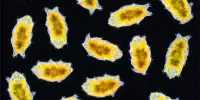Gene duplication is a genetic phenomenon in which the genome of an organism gains an extra copy of one or more genes. It is a major mechanism for the generation of new genetic material during molecular evolution. It is defined as any duplication of a gene-containing region of DNA. This process can occur through a variety of mechanisms and is important in the evolution of species.
Gene duplications can occur as a result of a variety of errors in the DNA replication and repair machinery, as well as by chance capture by selfish genetic elements. Ectopic recombination, retrotransposition events, aneuploidy, polyploidy, and replication slippage are all common causes of gene duplications.
There are several ways in which gene duplication can occur:
- Unequal Crossing Over: This can occur during meiosis when homologous chromosomes exchange genetic material. If the exchange is unequal, one chromosome may have an extra copy of a gene.
- Retroposition: The mRNA (messenger RNA) of a gene is reverse-transcribed into DNA and inserted back into the genome during this process. This results in a duplicate gene that lacks the original introns and is frequently found in a different genomic context.
- Duplication of Chromosomal Segments: Large-scale chromosomal segment duplications can occur as a result of errors in DNA replication or repair mechanisms.
Once a gene duplication event occurs, the duplicate gene (paralog) may undergo various evolutionary fates:
- Nonfunctionalization: One of the duplicate genes may accumulate mutations over time and become nonfunctional or pseudogenized.
- Neofunctionalization: One copy may acquire new mutations that result in a novel function not present in the original gene.
- Subfunctionalization: The duplicated genes may divide the functions of the ancestral gene, with each copy retaining a subset of the original functions.
Gene duplication is thought to be a major force in the evolution of genetic complexity. It provides raw genetic material for the emergence of new genes and functions, thereby increasing species diversity over evolutionary time. Duplicated genes can cause gene families to evolve and provide the genetic basis for the development of new traits and adaptations.
















